The Killarney Virtual Exhibit features items from the personal collections of community members, as well as the Killarney Centennial Museum, the Municipality of Killarney’s heritage collection, and various digital archives. The items have been digitized and compiled into a timeline, stretching from the mid-1800s to the present. The timeline can be viewed in its entirety, or it can be sorted into narrative bundles based on the historic themes of Family, Isolation, Lifestyle, Marine Life, and Transportation.
1850 - 1859
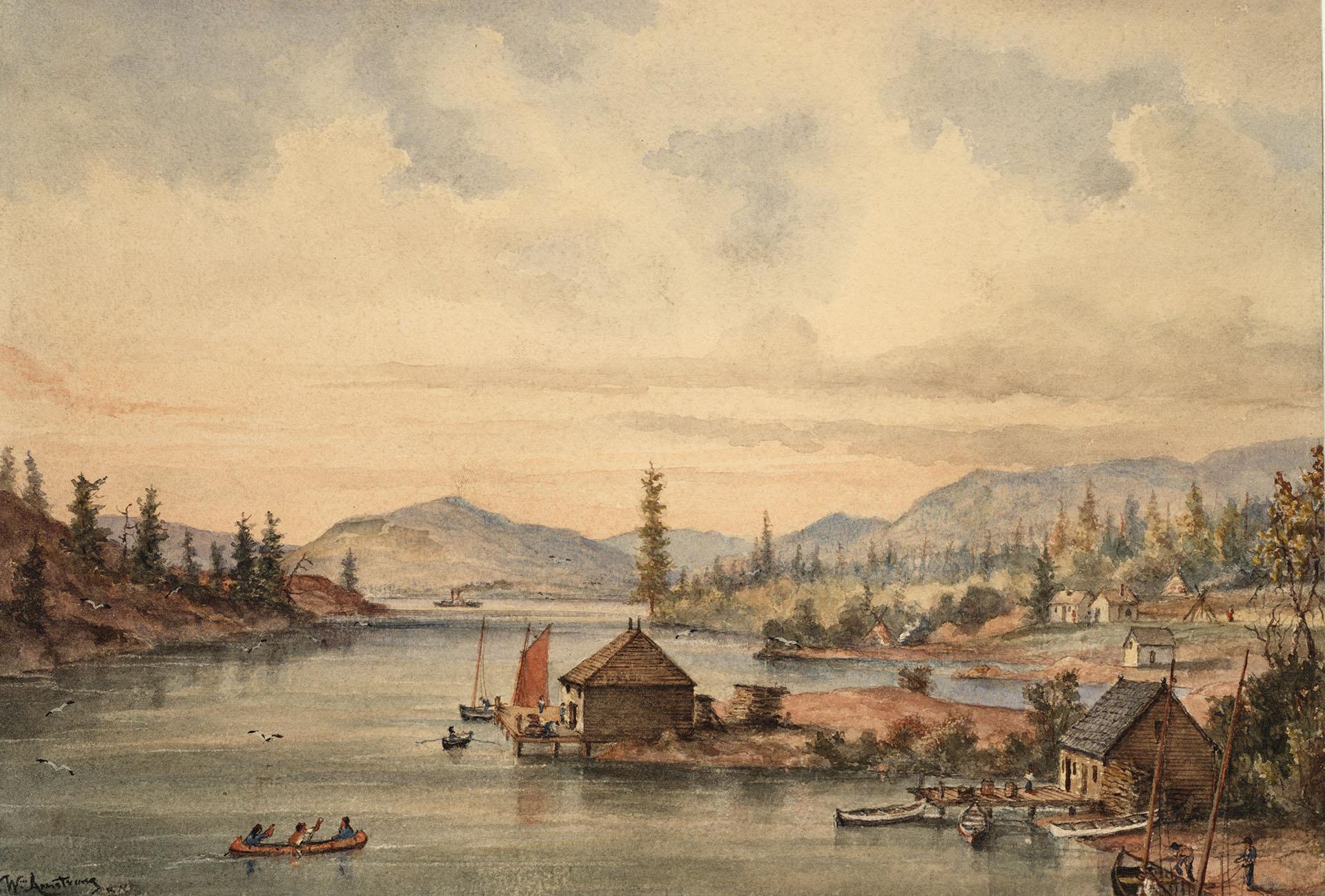
1856
Toronto Public Library
“Shebanwanning, Georgian Bay”
This watercolour painting by William Armstrong captures a peaceful scene on the Killarney Channel in the mid-1850s, with sailors tending to their vessels, canoers paddling across the narrow, and a steamship passing by in the distance. At the time, boats were the only mode of transportation into the community. Despite its remoteness, Shebahonaning (or "Shebanwanning"), the Ojibwe name for the area, thrived as the site of a bustling fur trading post and fishing hub.
1890 - 1899
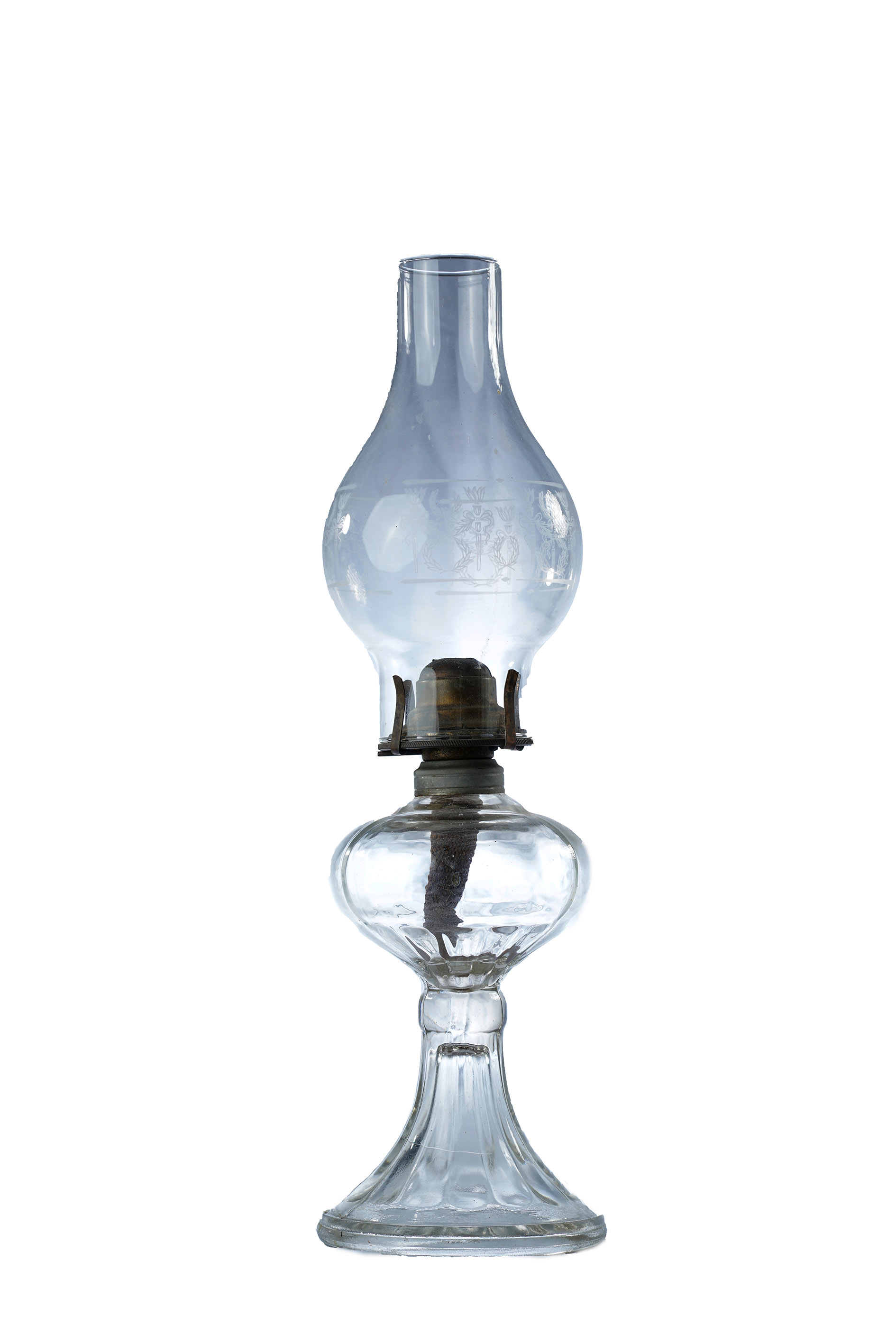
c. 1890
Killarney Centennial Museum
Kerosene Lamp
Kerosene lamps were a popular source of lighting in the late 1800s and early 1900s. Prior to the arrival of electricity in Killarney, kerosene lamps offered a safe and decorative way to light indoor and outdoor spaces. This glass lamp, featuring a floral motif around the chimney, may have been in use up to the 1950s, when Ontario Hydro was first established in the community.
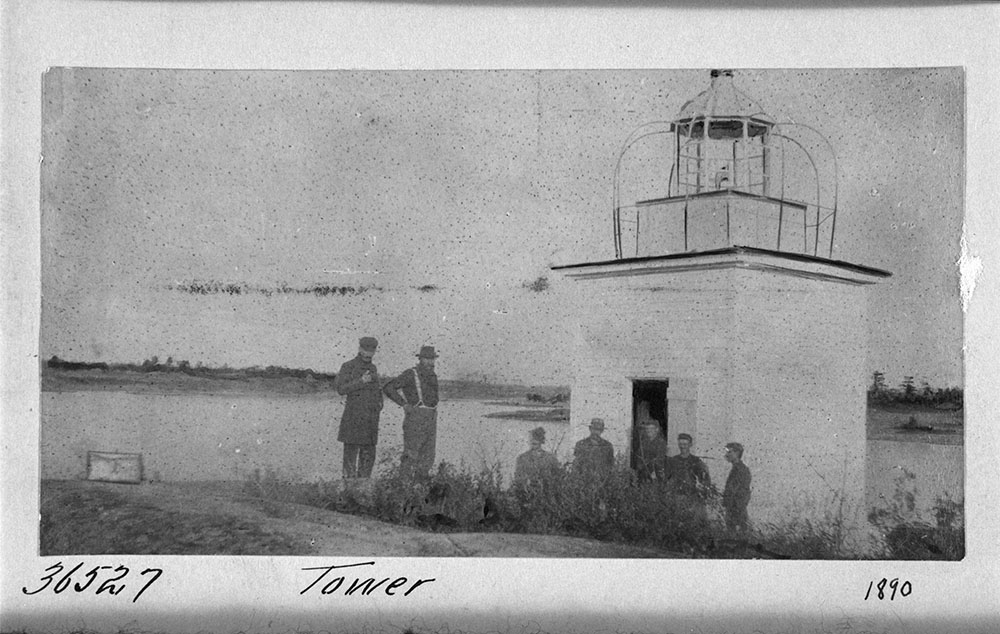
1890
Library and Archives Canada
Killarney Lighthouses
The waters surrounding Killarney feature two lighthouses: the East Lighthouse and the Northwest Lighthouse. The structures were originally built in the 1860s as the fishing industry developed and travel along the channel became more common. Because the community could only be reached by water, the lighthouses served an essential purpose, warning mariners of dangerous shores and pointing to safer passages.
1900 - 1909
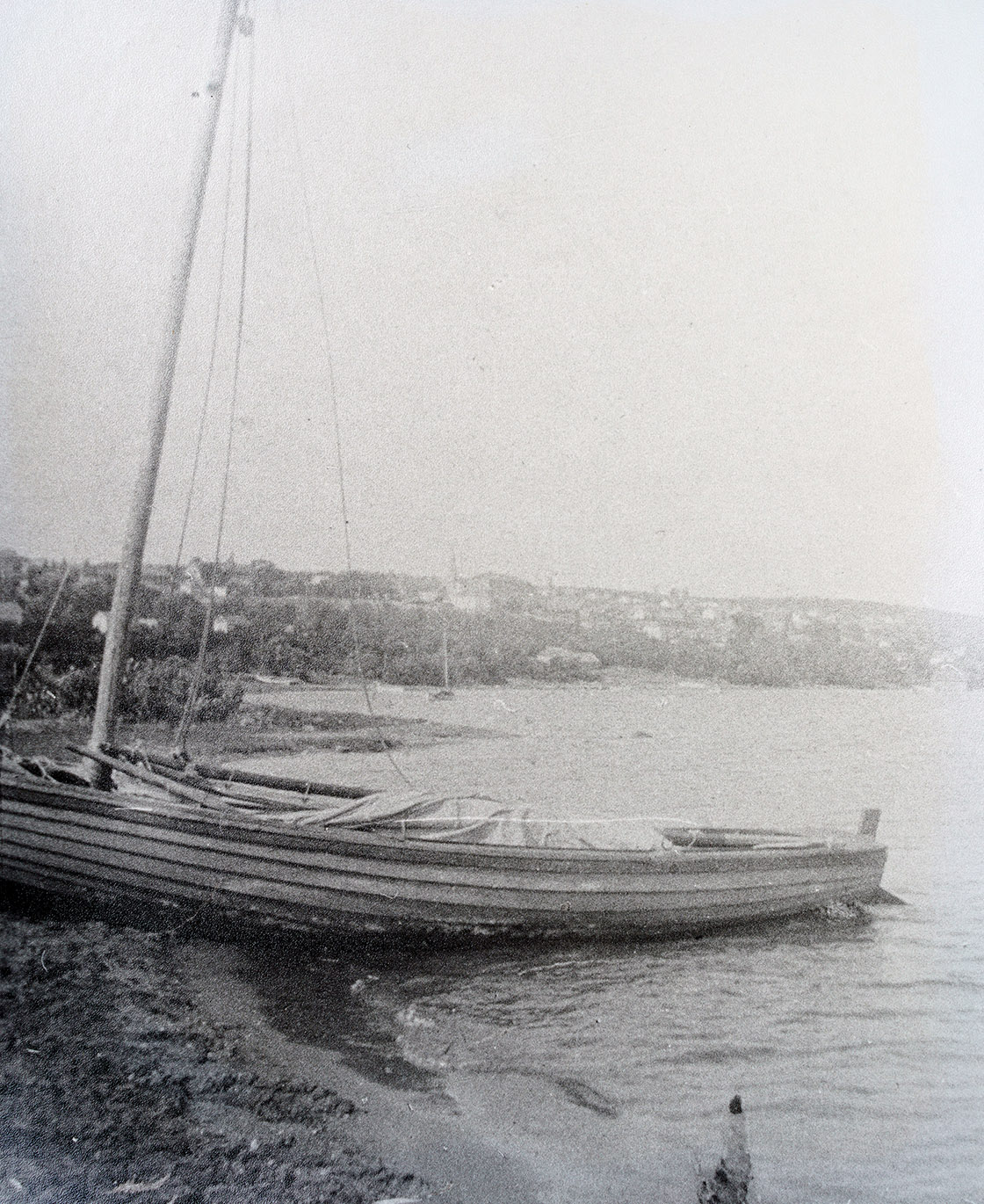
c. 1900
Mary Roque's Collection
Ferdinand Roque’s Fishing Boat
Ferdinand Roque, born in Quebec around 1825, was one of Killarney’s earliest settlers. After marrying Marguerite Recolet in 1849 on Manitoulin Island, Roque moved to the village of Killarney, where he remained until his death in 1907. He relied on the local environment to support his family through farming and fishing on Georgian Bay. Pictured here is his fishing boat, docked on the Killarney Channel.
1910 - 1919
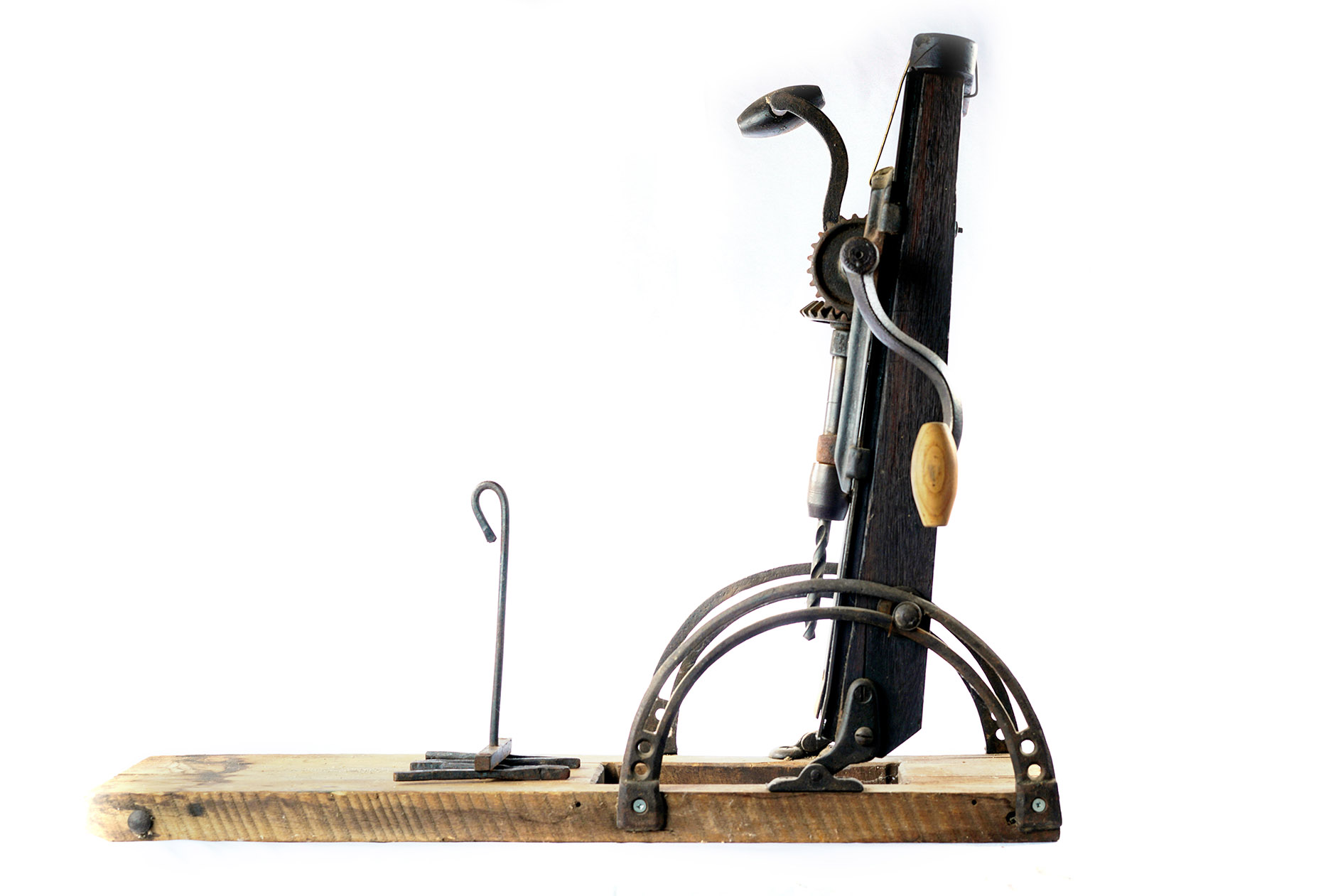
c. 1910
Killarney Centennial Museum
Carpenter’s Boring Machine and Branding Iron
This boring machine, made from wood and cast iron, was kept at the Killarney Quarry on Badgeley Point. Its manufacturing date is unknown, but its design is similar to others used in the late 1800s and early 1900s. The two-handed crank turns the auger to bore evenly sized holes into wooden surfaces. It is accompanied by a branding iron featuring a “W,” possibly for Willmott and Company, the first operators of the quarry.
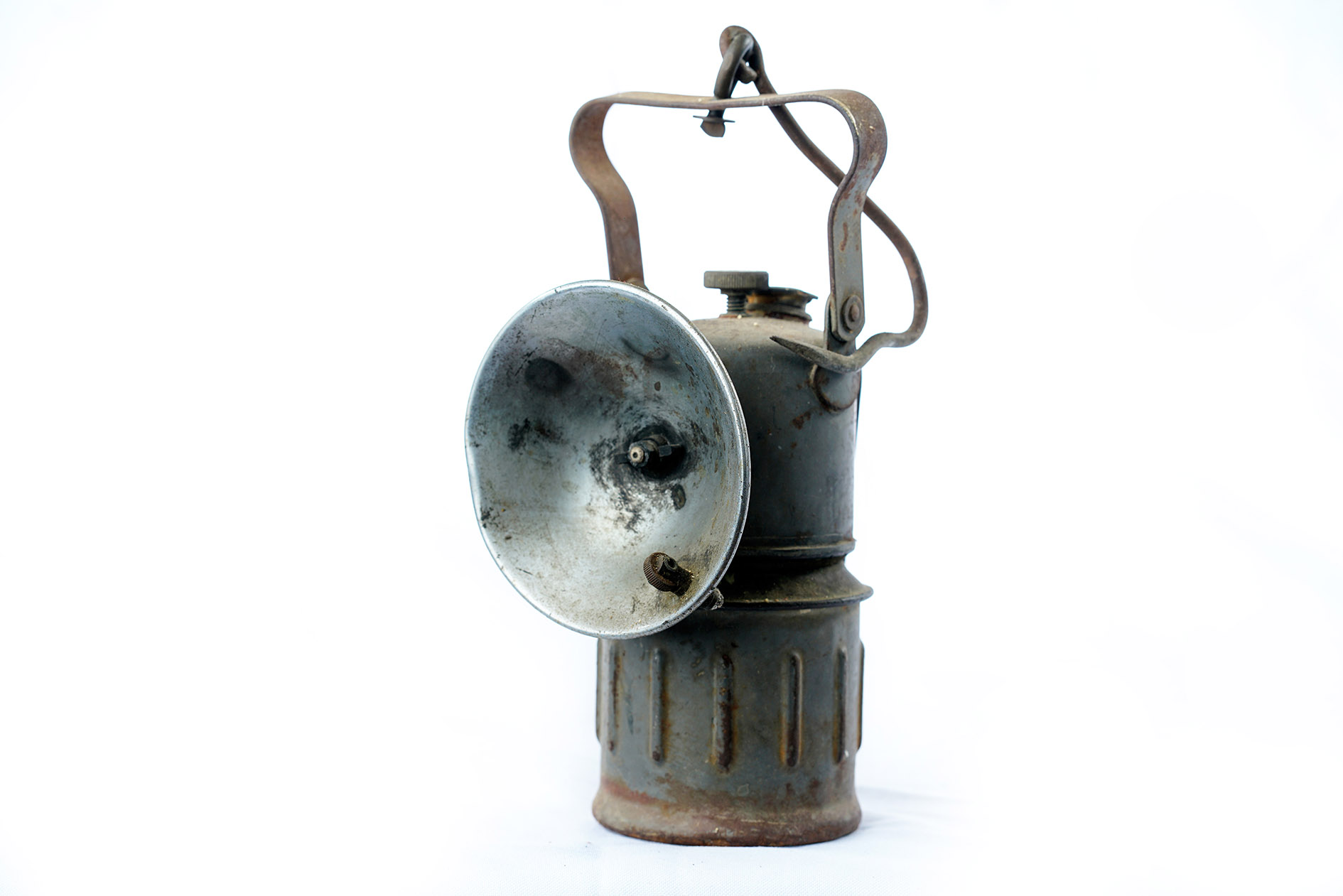
c. 1910
Killarney Centennial Museum
Carbide Mining Lamp
Carbide lamps gained popularity in the early 1900s after the commercialization of calcium carbide. Miners attached lamps to their head gear to improve visibility and illuminate the area that they were working in. Many lamps also had handles that allowed them to be carried or hung from walls and ceilings. This lamp may have been used by a miner working in the Killarney Quarry prior to the arrival of electricity in the community.
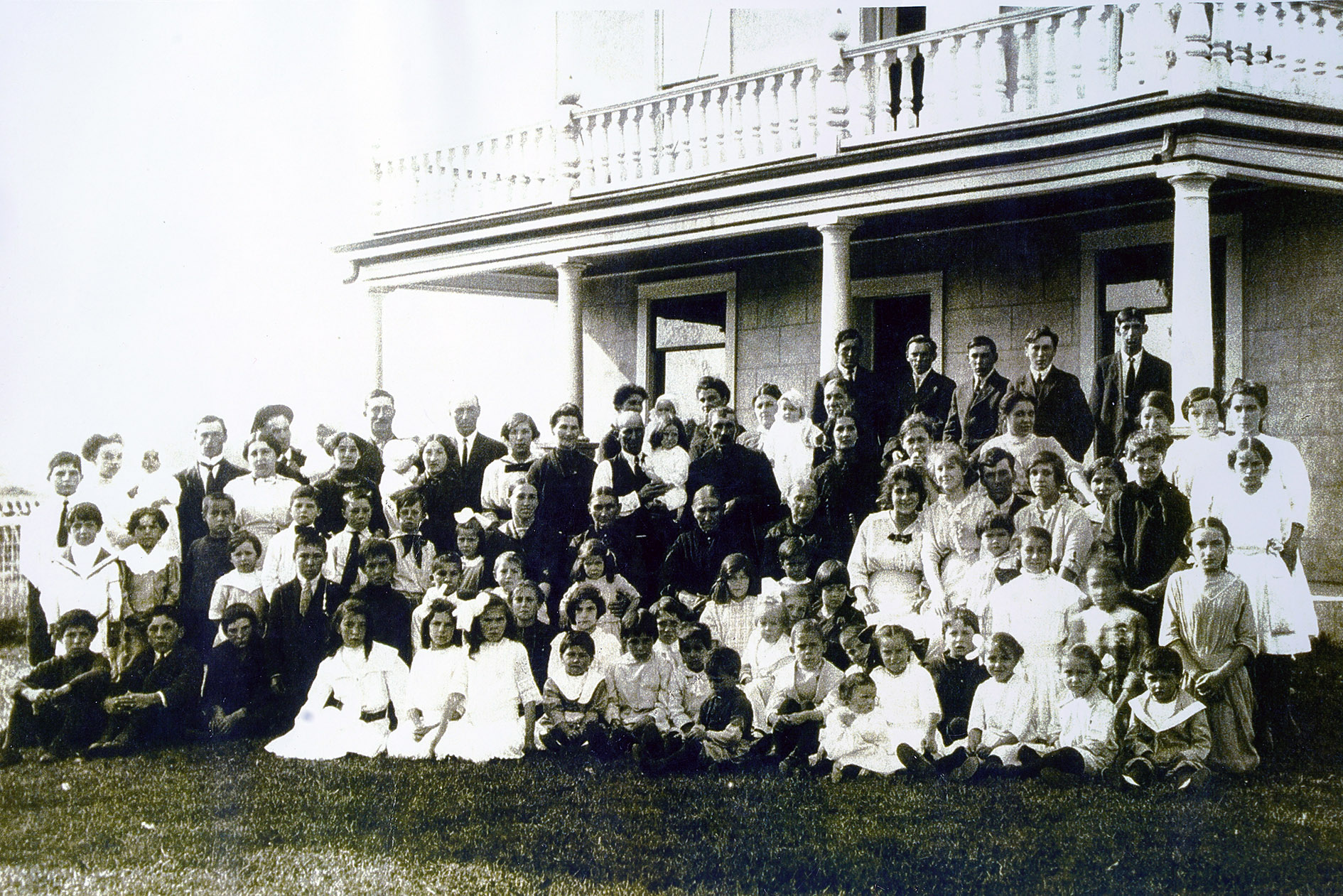
c. 1914
Mary Roque's Collection
Roque Family Reunion
This photograph, taken in the early 1900s, captures the extended Roque family at a family reunion in Killarney. The Roques are one of Killarney’s historic families, with deep roots in the fishing industry. The family descends from Ferdinand Roque, his wife Marguerite Recolet, and their fourteen children—thirteen of whom settled in Killarney.
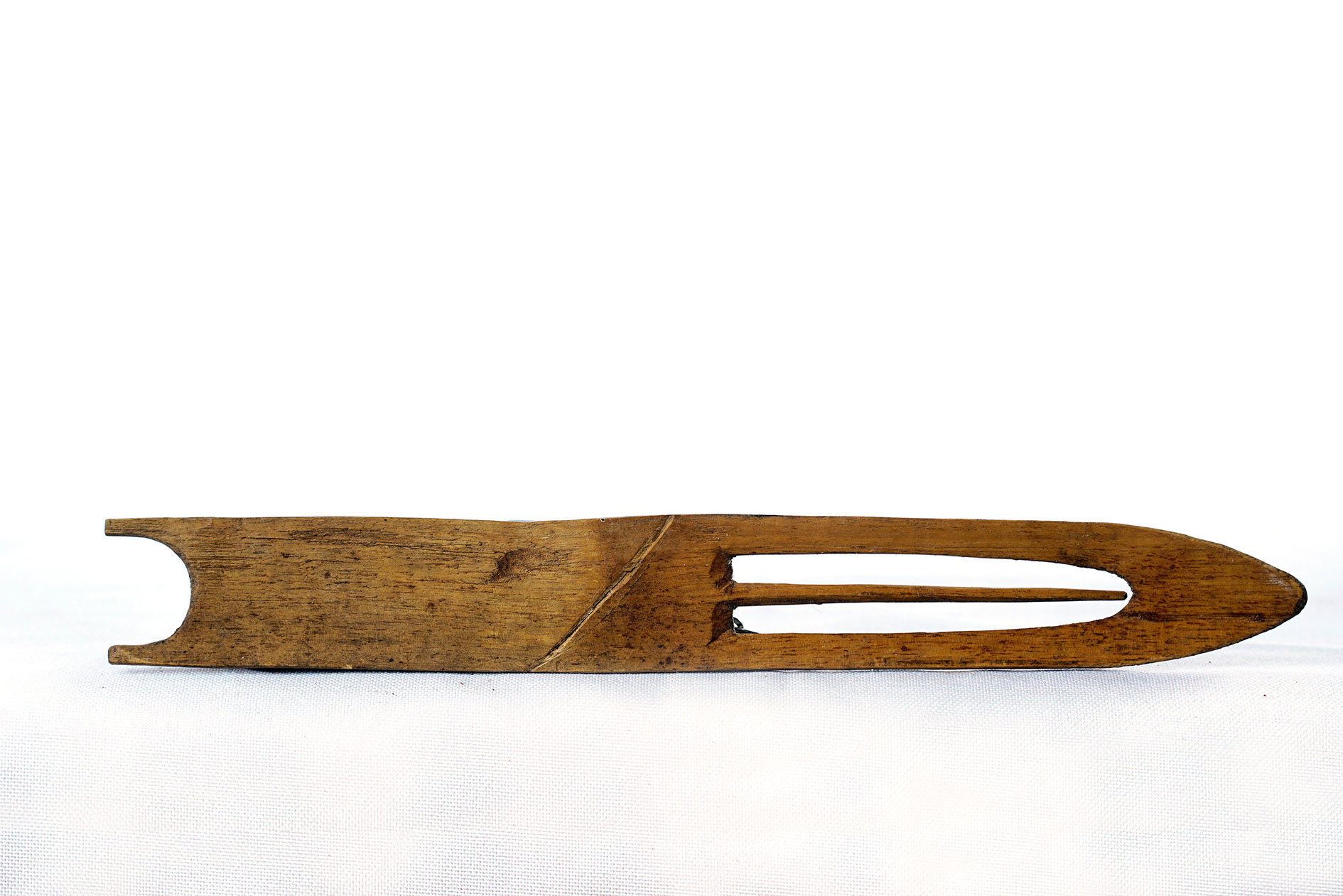
1918
Killarney Centennial Museum
Netting Needle
This wooden netting needle was carved by Pierre Regis de la Morandière, the grandson of Killarney’s first trading post operator Étienne Augustin de la Morandière, in 1918. Like many fishing families in Killarney, the de la Morandières produced and repaired their own nets in the early 1900s. To create a net, twine is repeatedly wrapped around the spindle in the centre, then pulled down and around the niche at the base of the needle.
1920 - 1929
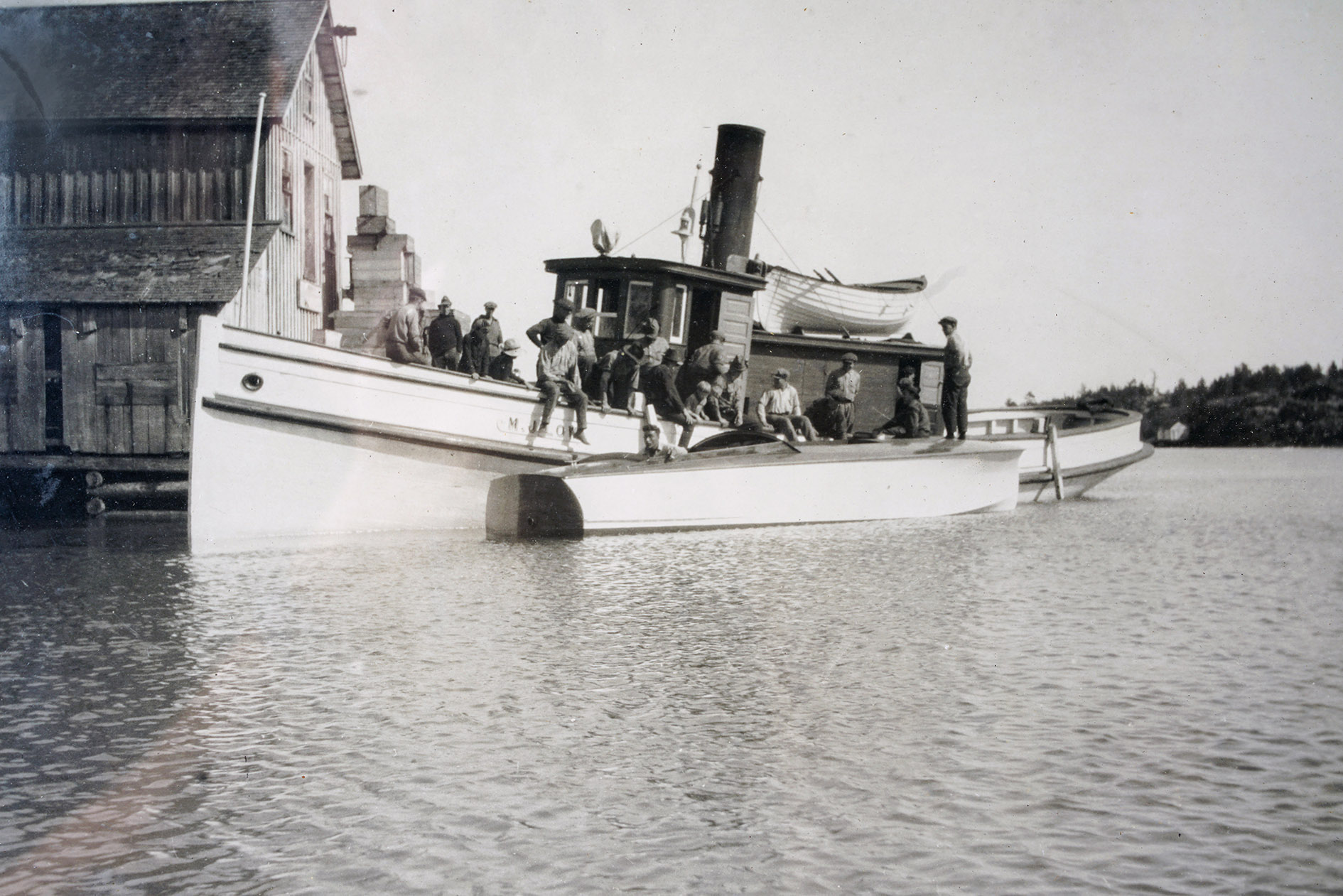
c. 1920
Justin Low's Collection
Charlie Lowe's Fishing Boat
The Lowe (or Low) family was heavily involved in the local fishing industry throughout the last century. The Lowes began operating a fishery out of Killarney in the early 1900s, spearheaded by Charles “Charlie” William Lowe. Pictured here are Charlie Lowe's tugboat and speed boat, used for net fishing and transportation on the waters around Killarney.
1940 - 1949
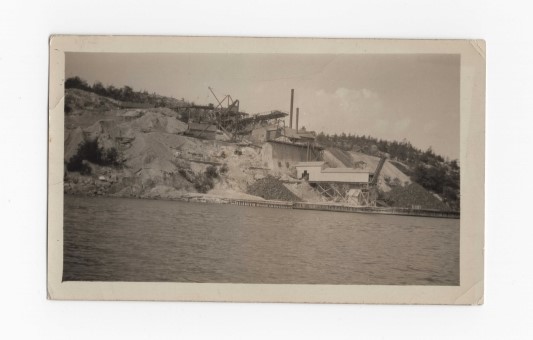
c. 1940
Mary Roque's Collection
Killarney Quarry
The Killarney Quarry, located on Badgeley Point, operated from 1911 until 1971. The seasonal work provided a new stream of income for residents and became essential to the local economy after the decline of the fishing industry in the mid-1900s. The quarry was rich in quartzite, which was mined for its silica content to make materials such as glass and silicone.
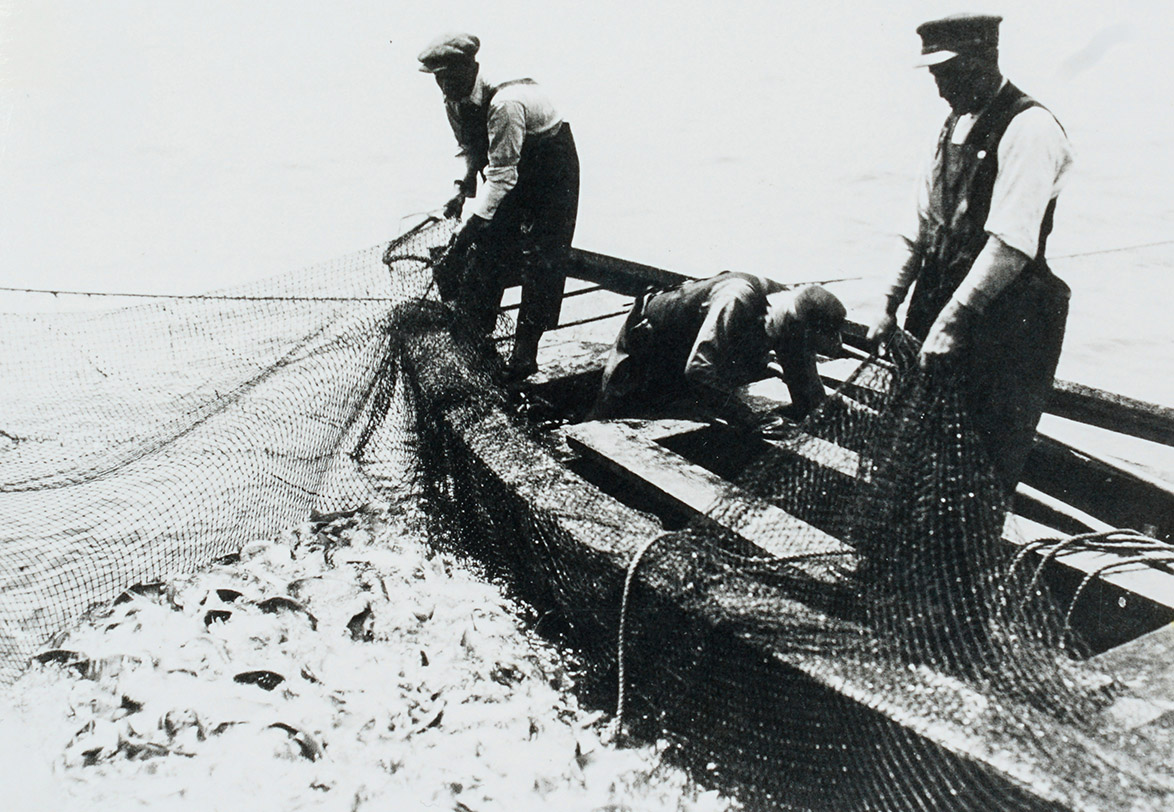
c. 1945
Mary Roque's Collection
Joe Roque Pound Net Fishing
Pictured here are Joseph Roque and a fellow fisher raising pound nets on Georgian Bay. Pound net fishing, a popular technique used in the 20th century fishing industry, relies on a series of weighted nets to capture fish. The underwater contraption encircles the fish and channels them into a net bag that can be easily pulled to the surface.
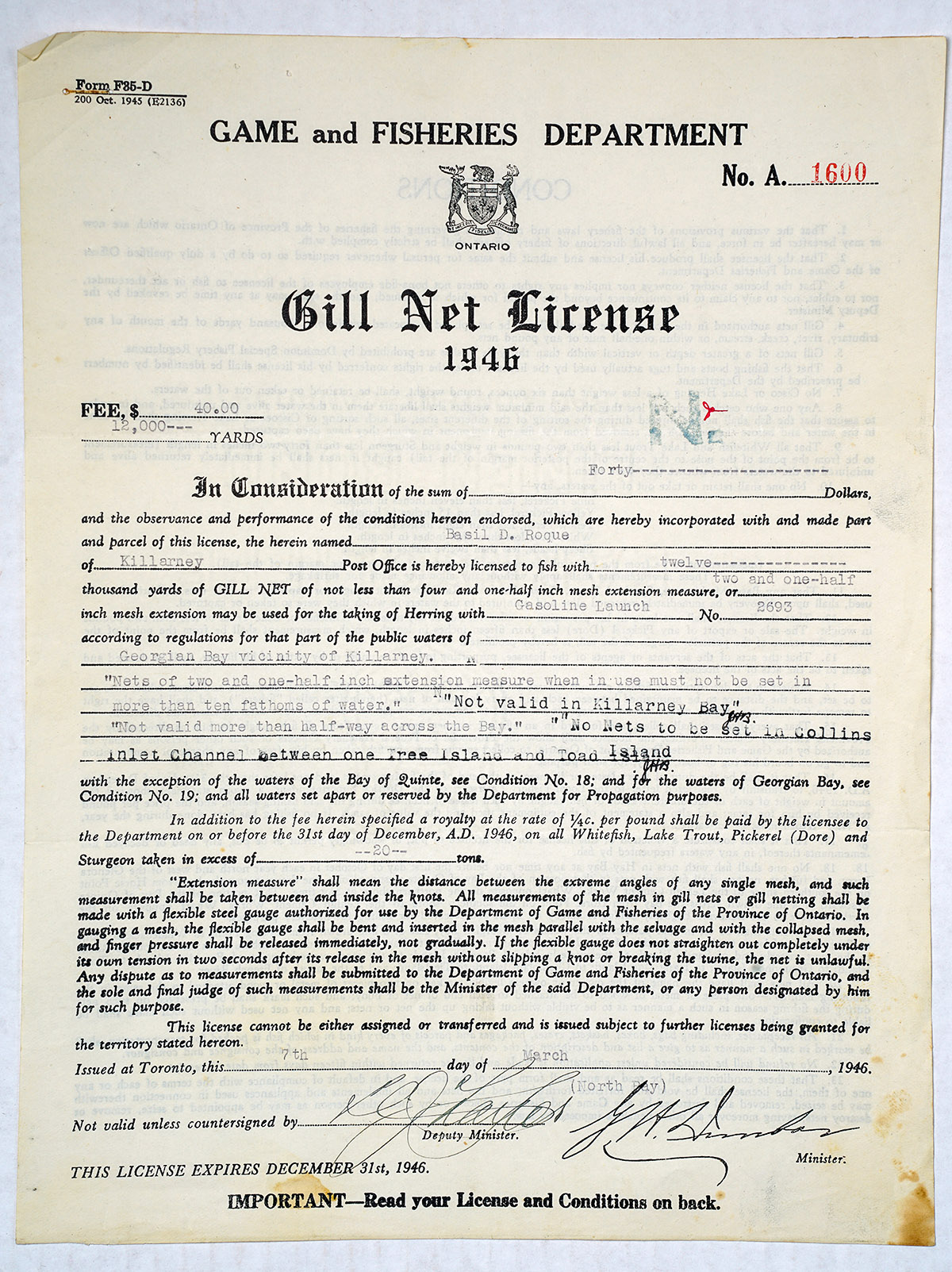
1946
Mary Roque's Collection
Basil Roque’s Gill Net License
The earliest example of gill net fishing in Ontario dates back to 1615, when European explorers recorded First Nations using nets to catch fish under the ice of Georgian Bay. The practice became increasingly popular over the following centuries, and licenses for commercial fishers were introduced to protect the Great Lakes from overfishing. Basil Roque’s 1946 gill net license permitted him to use 12,000 yards of net in Georgian Bay near Killarney.
1950 - 1959

c. 1950
Beauvais Family Collection
Portrait of Aunt Nancy
Nancy Pitfield (née Solomon), known in the community as “Aunt Nancy,” was Killarney’s sole healthcare practitioner for over fifty years. During her career, Nancy delivered over 500 babies, treated countless illnesses and injuries, and performed minor surgeries. Her dedication to the community left a lasting impact, and after her death in 1965, the Nancy Pitfield Memorial Park was established in Killarney to honour her legacy.
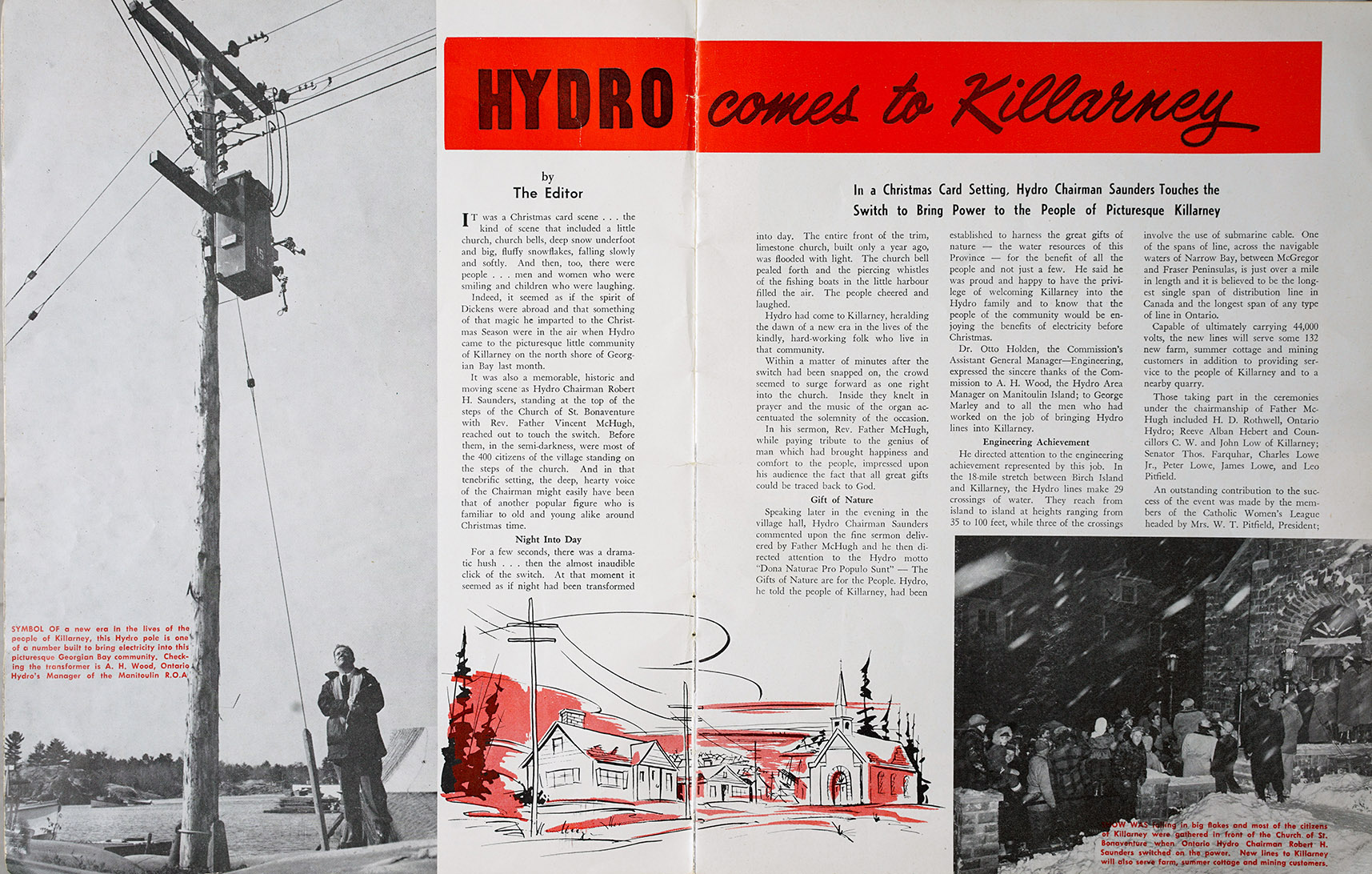
1951
Mary Roque's Collection
“Hydro Comes to Killarney”
This 1951 Hydro News article celebrates the arrival of hydroelectric power in Killarney and describes the scene as the lights were turned on for the first time. Despite the snow, a large group gathered on the steps of the Church of St Bonaventure to witness the monumental event. Electricity changed the lives of Killarney residents, bringing lightbulbs, electric ovens, and other modern luxuries into their homes.
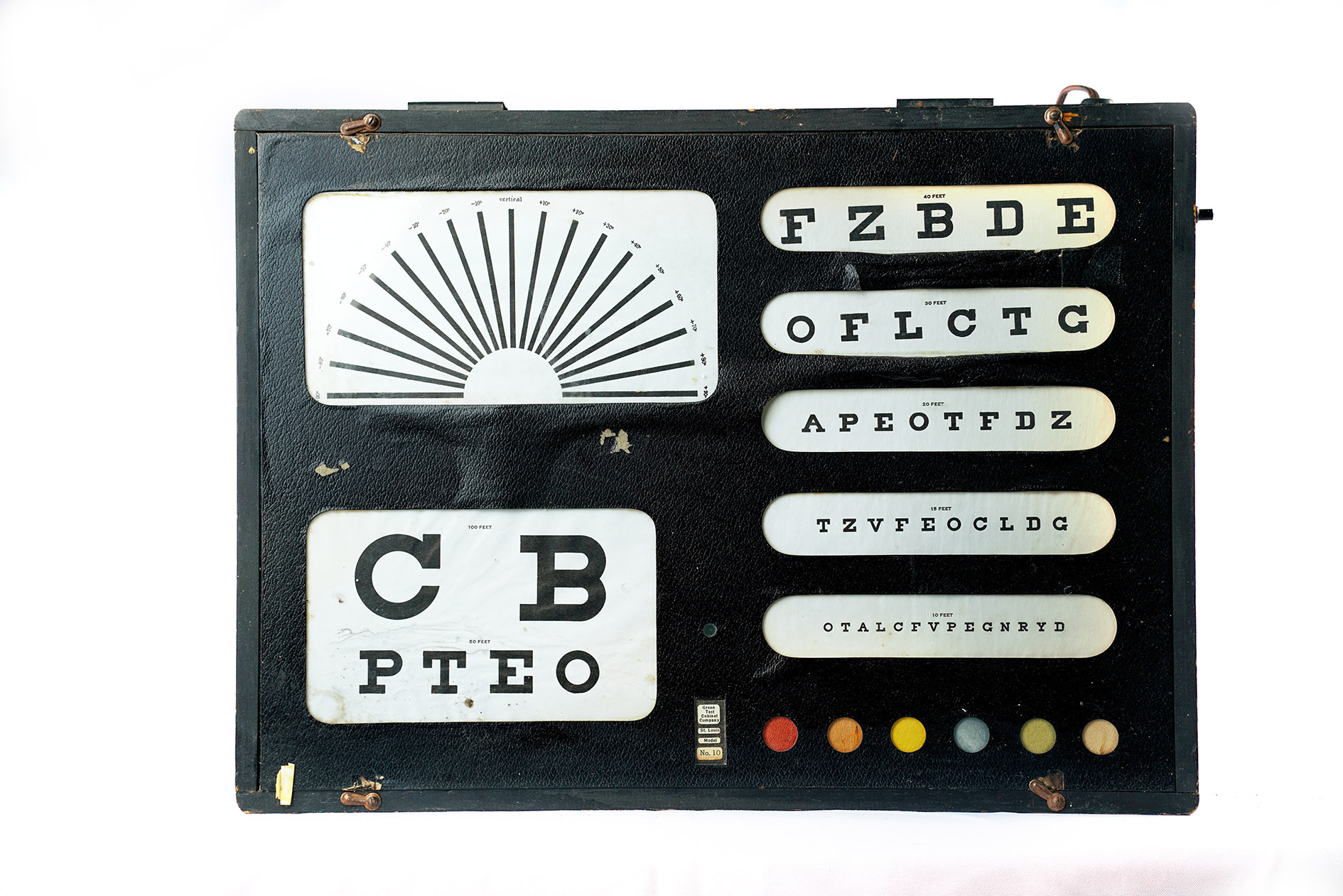
c. 1952
Killarney Centennial Museum
Aunt Nancy’s Eye Testing Kit
Before the highway connected the area to hospitals and doctors, Aunt Nancy, the community’s primary healthcare provider, was optometrist to a generation of Killarney families. This Green Test Cabinet Co. Eye Testing Kit helped her determine an individual’s reading, distance, and colour vision. Internal light bulbs illuminate the tests, making the letters and colours stand out against the background.
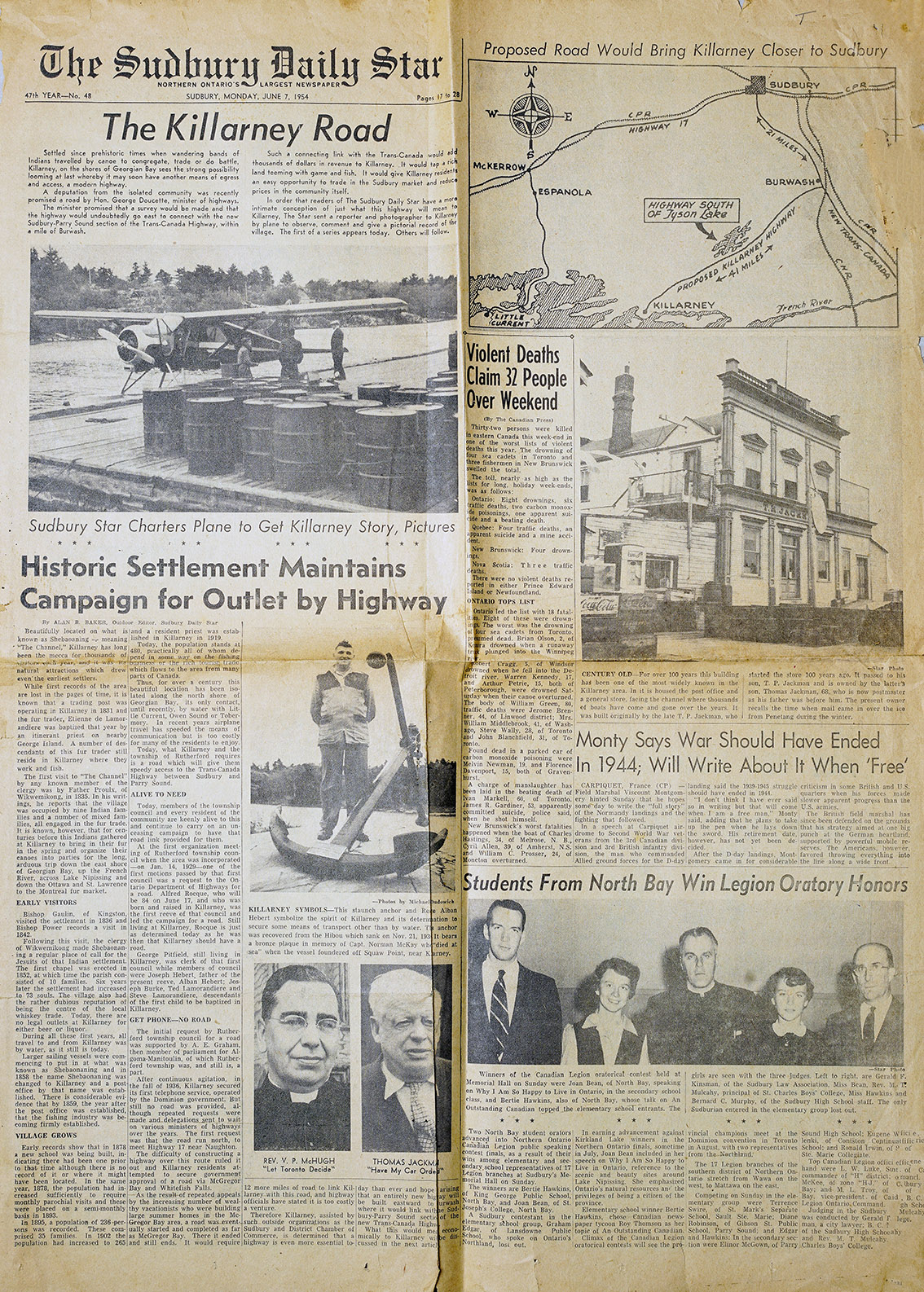
1954
The Pitfield Collection
“The Killarney Road”
On June 7, 1954, the Sudbury Daily Star ran an editorial on the community’s campaign to build a road that would connect Killarney to the Trans-Canada Highway. The campaign, which began in 1929, aimed to increase tourism in the area and improve access to neighbouring communities, like Sudbury and Parry Sound. After a 30-year wait, Highway 637 was completed in 1962, opening the community to the rest of the world.
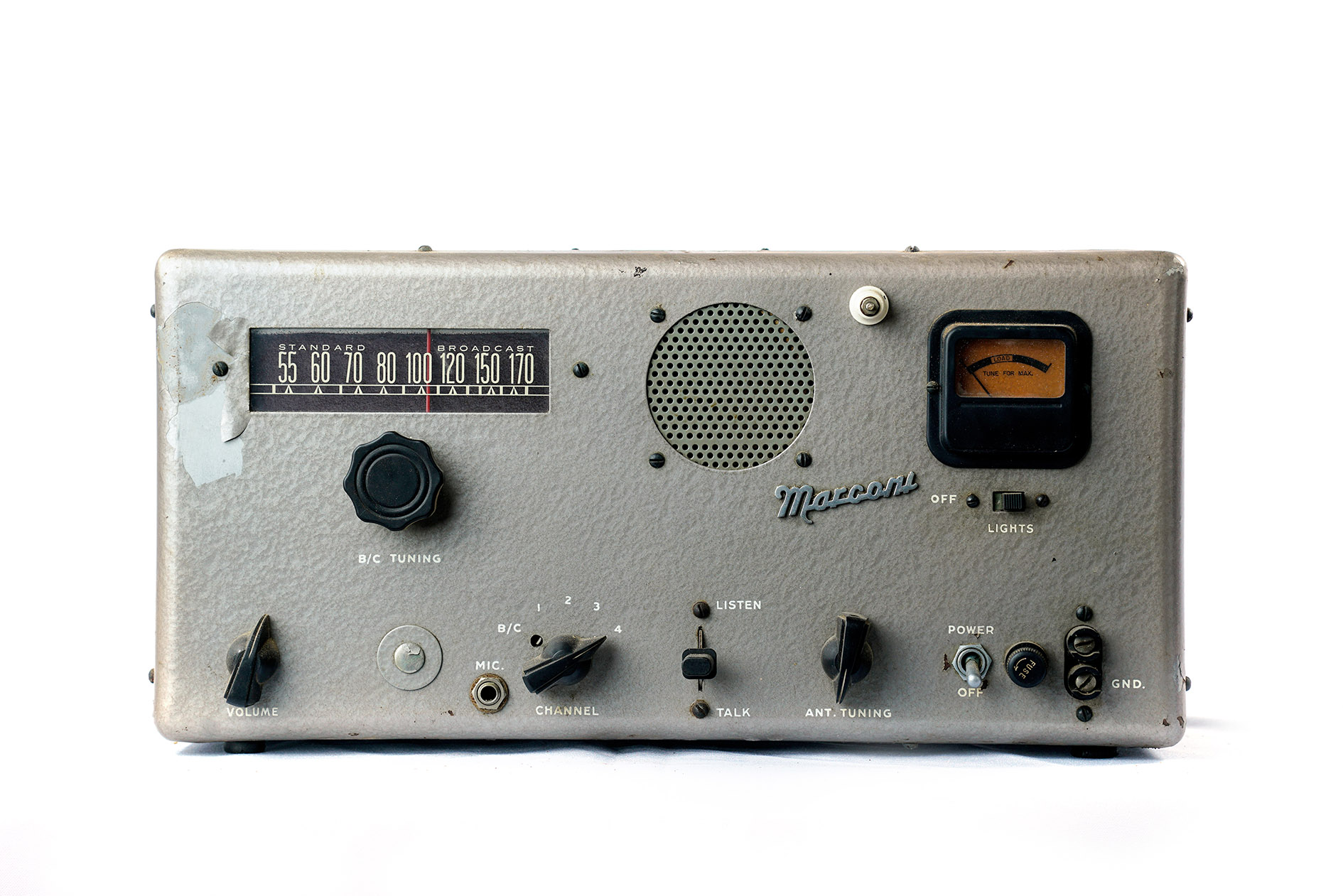
c. 1955
Killarney Centennial Museum
Ship-to-shore Radio
This Marconi transmitter-receiver was stationed in Jackson’s General Store, which sat on the eastern banks of the Killarney Channel in the mid-20th century. The first of its kind in Killarney, the ship-to-shore radio allowed for communication with vessels travelling to and from the community on Georgian Bay, including steamships and supply boats.
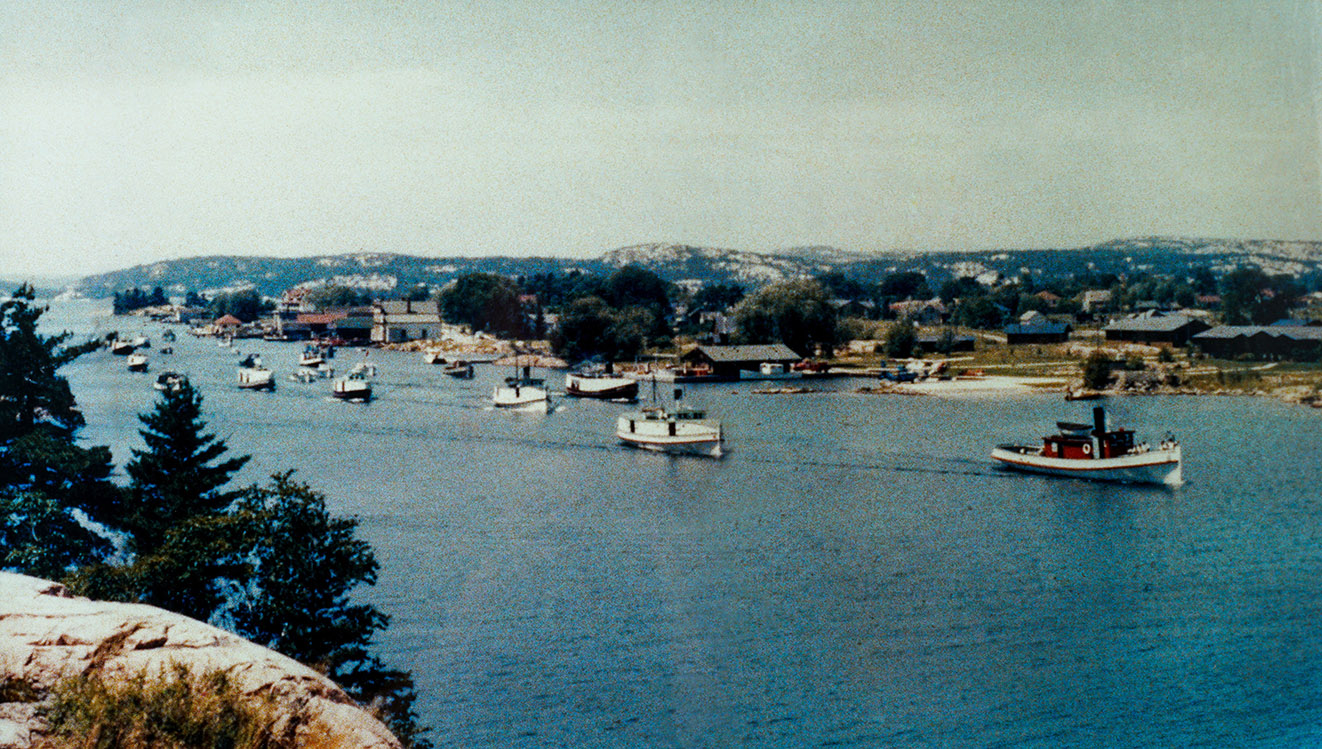
1956
Justin Low's Collection
Blessing of the Water
Beginning in 1935, a priest visited Killarney every spring to bless the waterways and ensure safe travels for the community. This was an important event in the community, as many people worked on the water in the fishing industry. This image depicts an array of fishing boats on the Killarney Channel during the ceremony in 1956.
1960 - 1969
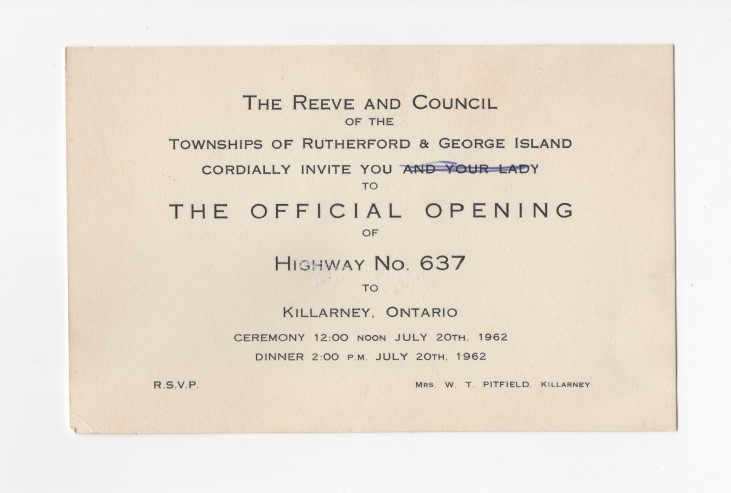
1962
Mary Roque's Collection
Highway 637 Opening Invitation
On July 20, 1962, the completion of Highway 637 ended a lifetime of isolation for Killarney. Prior to its construction, the town could only be reached by water or air. The highway provided not only the functionality of land access by connecting the town to the Trans-Canada, but also a scenic route for drivers, who had views of lakes, rivers, and forests along the 44-mile stretch of road. Tourists were now able to visit the town and take in its natural beauty.
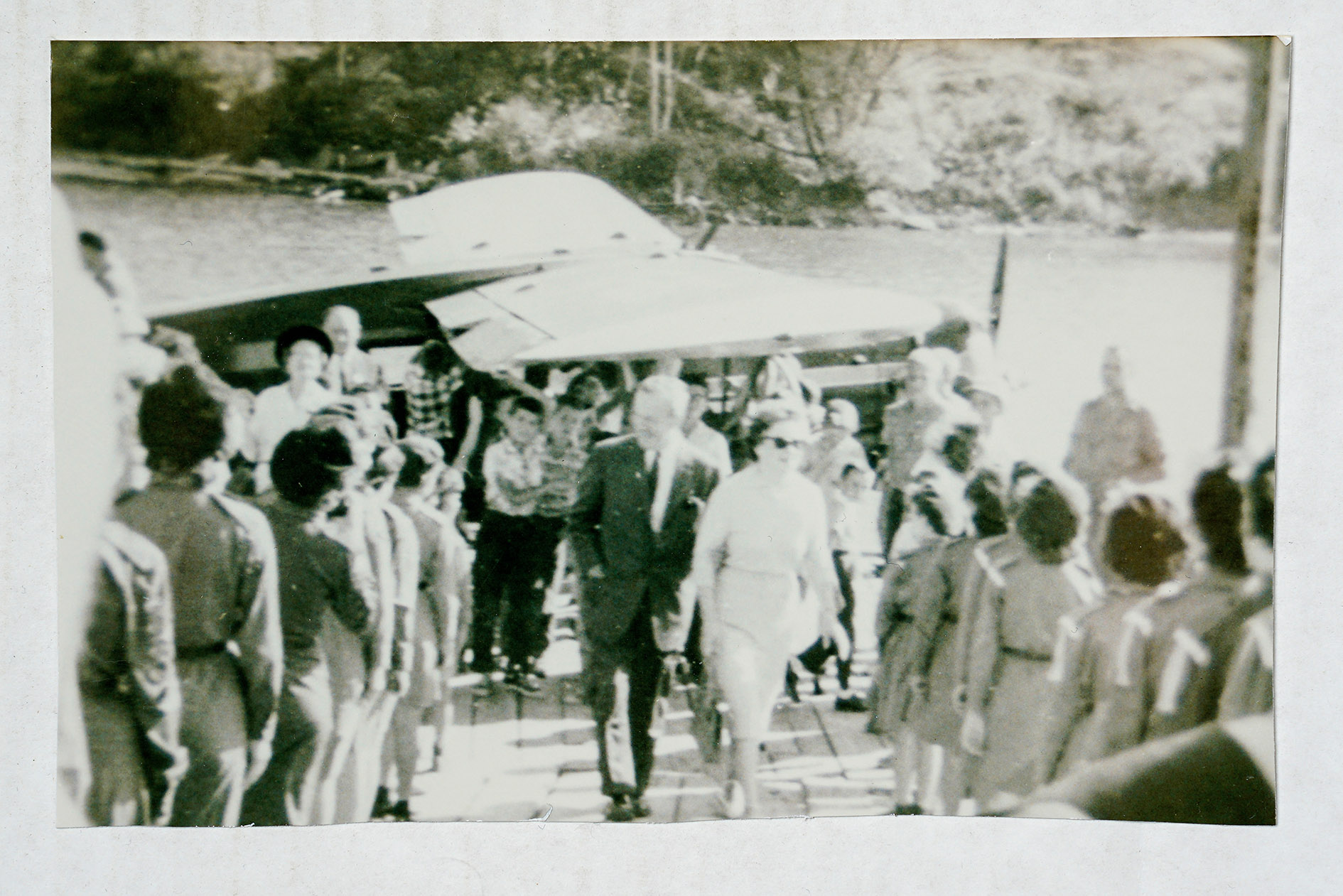
1963
Mary Roque's Collection
Lester B. Pearson Visits Killarney
In 1963, Prime Minister Lester B. Pearson arrived in Killarney by seaplane, landing in front of Herbert Fisheries on the Killarney Channel. Notably, he was the first Prime Minister to hire a plane to travel between remote locations in his riding of Algoma East, Ontario. Though the highway was open, planes offered the fastest method of travel around Georgian Bay. His visit drew a crowd, as shown in photographs taken that day.
1970 - Present
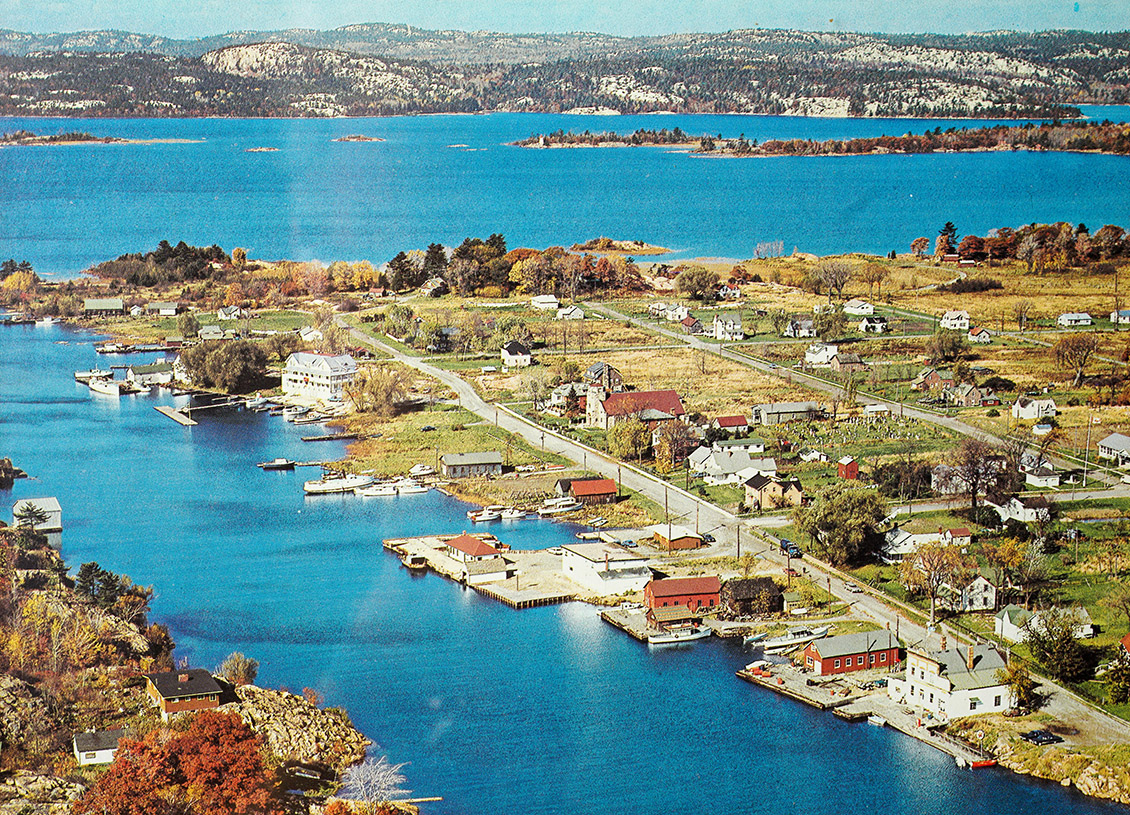
1972
Justin Low's Collection
Aerial View of Killarney, 1972
This aerial photograph offers a generous view of Killarney’s landscape in the 1970s. Boats, docks, and businesses line the channel, with rows of houses and the church set further inland. A collection of small islands sits north of the peninsula in Killarney Bay. Perched on the rocky outcrop of Partridge Island is the Northwest Lighthouse, built in 1909 by the Dominion Department of Marine to replace the original 1867 structure.
